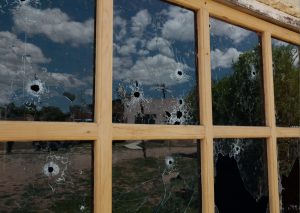 Introduction: The Three Princes of Serendib, where Serendip is the Classical Persian name for Sri Lanka, is a fairy tale in which the protagonists ‘were always making discoveries, by accidents and sagacity, of things they were not in quest of.’ Based on this, Horace Walpole coined the word serendipity in 1754 to mean inventions or discoveries made by accident. Science and technology offer many anecdotes of serendipitous discoveries and inventions. Here is the fifth such story in a series about serendipitous, patented inventions.
Introduction: The Three Princes of Serendib, where Serendip is the Classical Persian name for Sri Lanka, is a fairy tale in which the protagonists ‘were always making discoveries, by accidents and sagacity, of things they were not in quest of.’ Based on this, Horace Walpole coined the word serendipity in 1754 to mean inventions or discoveries made by accident. Science and technology offer many anecdotes of serendipitous discoveries and inventions. Here is the fifth such story in a series about serendipitous, patented inventions.
If you are a fan of action movies, you may have noticed that, often, when a gunshot is fired through the windowpane of a building, the glass is shattered to smithereens. You may have also noticed that when a gunshot is fired through the windshield of a car, it goes frosty, and there is a bullet hole in it. If you have ever wondered why it, too, is not blown to smithereens, and if you do not already know the answer, here is the story behind the phenomenon.
Édouard Bénédictus was a French polymath. He was a chemist, inventor, painter, composer, bookbinder, and textile designer. In 1903, he was working in his laboratory. He knocked a flask over. If that happened, one would expect that the flask would shatter and shards would fly off in all directions. Though the flask shattered, the shards did not fly off and the flask more or less retained its shape.
Perhaps many would clear the mess and get on with their work. Bénédictus, however, noticed this unusual phenomenon and investigated it. He found, from an assistant, that the flask had previously contained cellulose nitrate, a plastic in liquid state, and it had formed a thin film on the inner surface of the flask. This thin film had held the shards of the broken flask together.
Bénédictus continued to ponder over the incident. One day, he read a newspaper article about how shattered glass had seriously injured two women in a car accident. This gave him the idea about the shatterproof glass that he had invented accidentally in his laboratory. He continued to work on the subject and came up with a solution. The solution was to sandwich a layer of the cellulose nitrate between two sheets of glass.
Bénédictus filed for a patent in 1909. In 1911, he formed Société du Verre Triplex (Triplex Glass Company), which fabricated a glass-plastic composite to reduce injuries in car accidents. However, the production of Triplex glass was slow, laborious, and painstaking. This made it expensive and was not adopted widely right away by automobile manufacturers. The laminated glass he had invented, however, was widely used in eyepieces of gas masks during World War I. The manufacturing process was licensed to the English Triplex Safety Glass Company in 1912. Later, in the United States, both Libbey-Owens-Ford and Du Pont with Pittsburgh Plate Glass produced Triplex glass.
Further development by others continued based on the same basic principle, and better types of laminated safety glass were invented. In 1905, John Crewe Wood patented a laminated glass specifically for use in automobile windshields. The layers of glass were bonded together by Canada balsam.
Still later, in 1927, the Canadian chemists Howard W. Matheson and Frederick W. Skirrow invented another plastic – polyvinyl butyral. Car companies discovered that laminated safety glass consisting of a layer of this plastic between layers of glass would not discolour and was not penetrated easily. Soon, the new safety glass had replaced the older varieties.
The fact remains that the serendipitous invention of laminated glass by Édouard Bénédictus paved the way for safer glass for various applications, including automobile windshields, thereby saving millions of lives since then.
Author: J L Anil Kumar
First Published by: Lexology here



